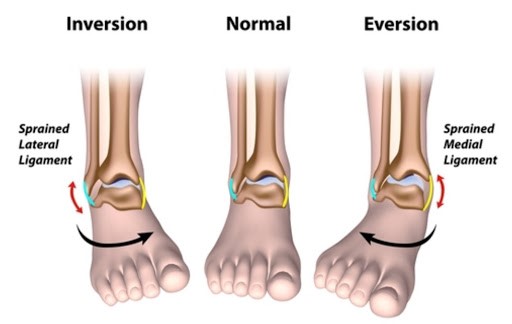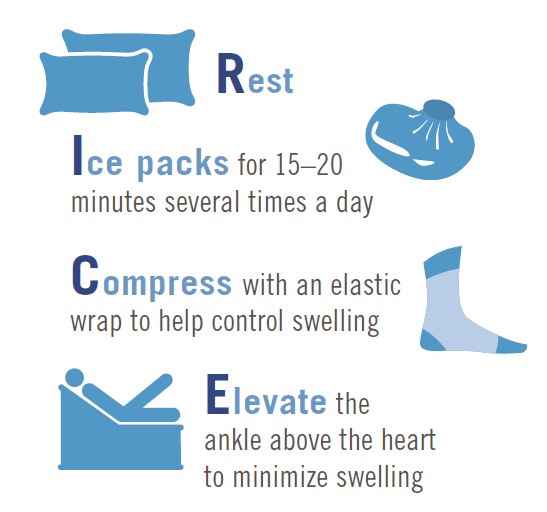How to manage a Sprained Ankle

What is Ankle sprain?
Sprained ankle is a common injury in which there is overstretching of ankle ligaments, which can occur when your ankle twists during fall or twists on uneven surface. A sprained ankle can be painful and restrict your ability to walk.Mild ankle sprain recovers with rest and few home measures within 2-3 weeks but the severe ankle sprain may require rehabilitation and/or surgery.
Symptoms:
- Pain around ankle
- Swelling around ankle
- Bruising around ankle
- Discomfort while walking
- Slight difficulty in moving the ankle up or down
Note: An ankle sprain should not cause true weakness or numbness. If your leg or foot is weak or numb, you may have an injury that involves more than your ankle, or a broken bone, muscle impairment, or nerve damage.
Causes:
It occurs due to damage of ligaments due to twisting force. Ligaments are structure which provides, stability to ankle that controls movement preventing any unwanted stress.
Of the lateral ankle ligament complex, the most frequently damaged one is the anterior talofibular ligament (ATFL). Their anatomical location and the mechanism of sprain injury mean that the calcaneo-fibular (CFL) and posterior talofibular ligaments (PTFL) are less likely to sustain damaging loads.

On the medial side the strong, Deltoid ligament complex is stronger and less susceptible to injury.
Types based on mechanism of injury:
Inversion type: About 90% are inversion type occurred by twisting of foot inwards. It usually causes pain on outer side of ankle.
Eversion type: When the foot is twisted outwards causing stretch on Deltoid complex. Pain usually occurs on inner side of ankle.
Grades:
Type 1- Stretched ligaments (little pain and swelling with little impact on function)
Type 2- Partial tear of ligaments (moderate pain and swelling with impact on function, decreased ROM)
Type 3 - Complete tear of ligaments (intense pain and large swelling with marked instability)
It is difficult to distinguish between ankle sprain and fracture on physical examination, hence imaging is important to rule out fracture
Goals of Physiotherapy:
- To decrease pain and swelling
- To restore full range of motion at ankle
- To restore balance and proprioception
- To regain strength and flexibility of ankle and foot muscles
- To prepare for load bearing activities
- Advance functional training in athlete
Treatment:
Inflammatory phase (0-3 days):- goal is to reduce pain and swelling
Treatment begins with P.R.I.C.E approach
Protection: Protect the ankle from further injury by resting and avoiding activities that may cause further injury and/or pain
Rest: Advise rest for the first 24 hours after injury
Ice: Apply a cold pack (15 - 20 minutes, one to three times per day)
Compression: Apply compression bandage to control swelling caused by the ankle sprain
Elevation: Ideally elevate ankle above the level of the heart,avoid positions where the ankle is in a dependent position.

- Electro therapy using advanced technology for pain relief
- Range of motion exercises for ankle within pain free range
- Resisted ankle exercises to improve strength
- Weight bearing exercises to improve function
- Functional training and agility training in later stages of healing
- Balance training
- Protective bracing to prevent any re injury
- Patient education for prevention and proper footwear that provides support to an ankle
Recovery period for mild sprain is usually 3-4 weeks, in moderate sprain it takes up to 6 weeks and in severe sprain recovery period is 6-12 weeks which may vary from person to person.